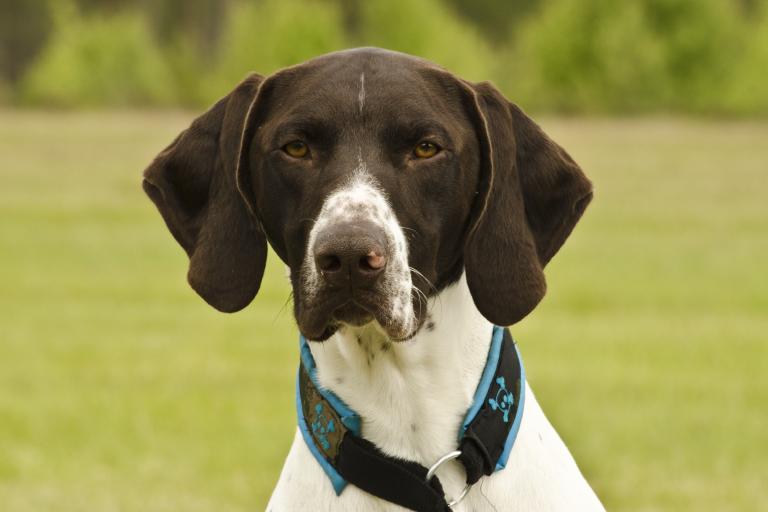Junctional Epidermolysis Bullosa (JEB Dog)
Junctional Epidermolysis Bullosa (JEB) is a skin disease that causes skin lesions and blistering due to a lack of connection between the individual skin layers. There may also be problems with their footpads.
The disease occurs in the German Shorthair Pointer. It is inherited in an autosomal recessively way.
Symptoms
- Skin lesions and blistering after irritation, but also spontaneously
- Healing often with scarring, increasing scarring of the skin
- Problems with their footpads and thus walking
General Information
- Junctional Epidermolysis Bullosa (JEB) is a skin disease caused by a lack of connection between the individual skin layers.
- A mutation leads to the malformation of a type of collagen which is an important factor for anchoring individual skin layers ( basal membrane in the dermis).
- Affected animals have a greatly reduced quality of life and, depending on the severity, have to be euthanised.
Test Information
This mutation test shows an insertion (4818+207ins6.5 kb) in intron 35 of the VWF gene.
Genotype and Lab Report
Inheritance: autosomal recessive
→ The disease only occurs when both alleles of the gene are affected by the mutation (jeb/jeb). Dogs that have only one allele with the causative mutation (N/jeb) are clinically healthy carriers.
Genotypes:
N/N = genetically normal
The dog has no variants for JEB and thus cannot pass it on to offspring.
N/jeb = a carrier
The dog is a clinically healthy carrier. The variation is passed on 50% to the offspring, which are also carriers.
jeb/jeb = affected
The variation will be passed on to 100% to the offspring, which will be carriers or affected.
Recommendations
- Carrier animals can be bred to normal animals (N/jeb x N/N). Before using the offspring in breeding, it should be tested whether they are normal or carriers.
- Mating two carrier animals (N/jeb x N/jeb) should be avoided because there is a 25% chance that the offspring will be affected.
- Affected animals (jeb/jeb) should be excluded from breeding.
Literature
Capt, A., Spirito, F., Guaguere, E., Spadafora, A., Ortonne, J.P., Meneguzzi, G.: Inherited junctional epidermolysis bullosa in the German Pointer: establishment of a large animal model. J Invest Dermatol 124:530-5, 2005. Pubmed reference: 15737193. DOI: 10.1111/j.0022-202X.2004.23584.x.
Further information is available at: Online Mendelian Inheritance in Animals.

